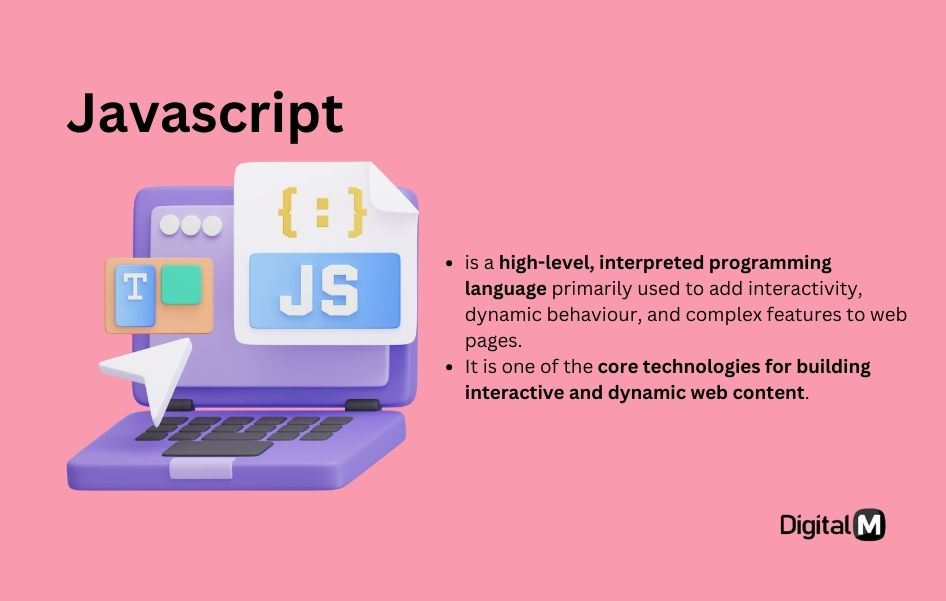Javascript
JavaScript is a high-level, interpreted programming language primarily used to add interactivity, dynamic behavior, and complex features to web pages. It is one of the core technologies for building interactive and dynamic web content.
JavaScript is a scripting language that makes websites interactive. It enables things like dynamic content updates, form validation, and interactive elements on web pages.

Key Points:
Client-Side Language: JavaScript is executed on the user’s web browser (client-side), allowing it to manipulate the content of a webpage after it has been loaded.
Interactivity: It provides the ability to create dynamic and interactive elements on a webpage, such as sliders, pop-up windows, and real-time updates without requiring a page reload.
Event-Driven: JavaScript responds to events triggered by users or the browser, like mouse clicks, keyboard input, or page loading. This event-driven nature makes it well-suited for creating responsive and interactive user interfaces.
Wide Usage: JavaScript is not limited to web browsers; it’s also used in server-side development (Node.js) and for creating various types of applications, including mobile apps and desktop applications.
Libraries and Frameworks: There are many JavaScript libraries and frameworks, such as jQuery, React, and Angular, that simplify and enhance the development process by providing pre-built functionalities and structures.
Example:
A simple example of JavaScript on a webpage might be a button that, when clicked, displays an alert with a message:
In this example, the JavaScript function showAlert() is triggered by the button click, resulting in an alert popup.
In summary, JavaScript is a programming language that enhances the interactivity and dynamic nature of web pages. It is widely used for creating responsive user interfaces, handling user events, and adding various features to websites.

